Around Cazebonne
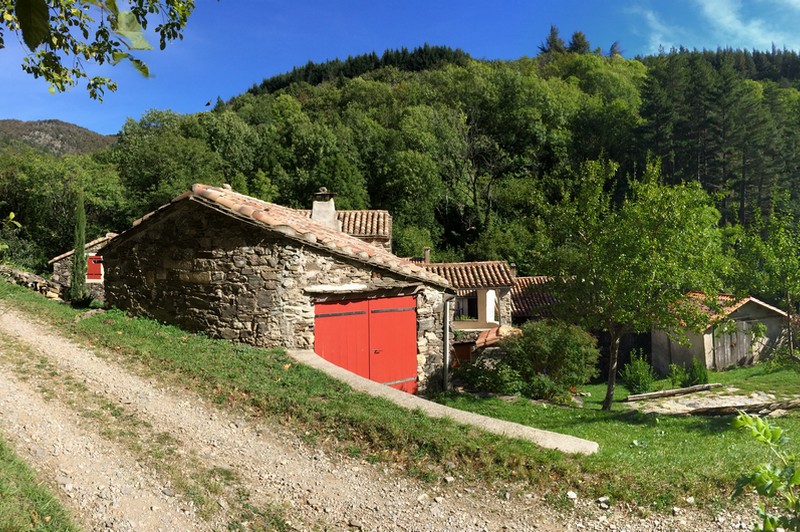
Alzon Yellow waymarks
Yellow waymarks
Around Cazebonne
Very easy
2h30
2,5km
+161m
-159m
Loop
Embed this item to access it offline
This walk takes you through the evolution of the forest, from reforestation and the creation of the Cazebonne arboretum in the very early 20th century (first loop) to today’s forestry management (second loop). The 3.4 hectare arboretum was built around the hamlet of Cazebonne in 1903 and is part of a network of ten arboretums created during the large reforestation programme on the Aigoual massif. The objective was to test the adaptability of various exotic species to a representative sample of local environmental conditions. During reforestation, a tree nursery was attached to the arboretum, which supplied plants used locally.
8 points of interest
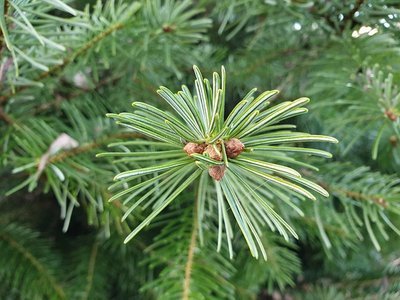
Sapin de Nordmann - © Hans Braxmeier  Flora
FloraNordmann firs
In the arboretum, several Mediterranean fir species were acclimatised. The trees girded in white were monitored by scientists. A report from 1976 by the French Forestry Office engineer Jean Pourtet states: “A very handsome cluster of Abies nordmanniana planted in 1903-1904 contained, in 1953, 32 high-quality trees that were numbered and measured. Their average circumference at 50 years of age was 125 cm”. Today, these same specimens have an average circumference of 230 cm and an average height of 40 m.
© Valère Marsaudon  Water
WaterThe béal (irrigation channel)
In the Cévennes, the impetuous torrents of March shrink to rivulets by mid-June. To make up for the lack of water, this irrigation system combines a dam in the riverbed with a small canal (béal) dug into the bank, which diverts the water towards a storage basin built out of dry stones (pesquier). This method used the natural energy of the current and irrigated the hayfields and even gardens and orchards.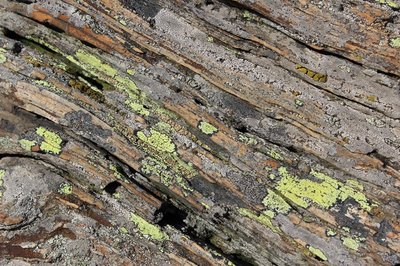
Schiste - © Valère Marsaudon  Geology
GeologySchist
The region’s schist was formed in the Palaeozoic, between 550 and 500 million years ago. It is mainly composed of micas, hence its precise name of mica schist. Its particularity is to divide into parallel layers. Chemical weathering turns schist into clay. This rock was much used in construction and has shaped the landscape: house walls, stone roofs; crop terraces; slab floors, paving; hive covers, chimney cowls, etc.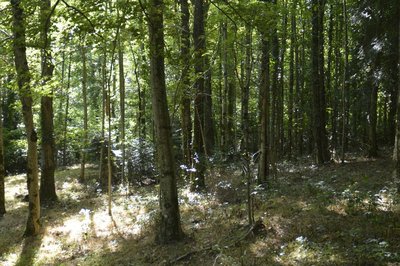
© C. Daquo  Landscape
LandscapeThe landscape closes in
When hayfields are abandoned, their flora develops very quickly. Grasses give way to tougher plants, such as stinging-nettles, brambles and dog rose. Then come wild fruit trees (sloe, hazelnut, dogwood, cherry, etc.), and finally shrubs and trees such as Scots pine, black pine, ash, black locust, oak and chestnut.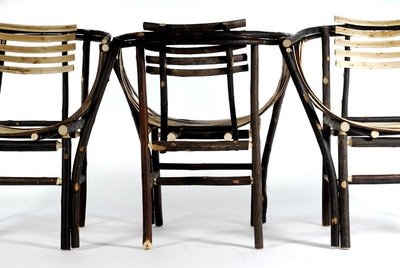
Mobiliers en chatâignier concçus par l'Atelier Chatersen (Alzon) - © Atelier Chatersen  Flora
FloraThe chestnut tree
Before reforestation in the late 19th century, the local landscape was varied: sheep pasture on moors and meadows; crops: potatoes, cereals, hay fields, orchards and gardens; woods (chestnut, oak or beech).
A few enormous chestnut tree trunks bear witness to this past. These grafted trees produced food for people (chestnuts, flour, etc.), flowers for the bees, dry wood for the fire, timber (for wooden roof structures, boards, battens, etc.), hives (rusquet), stakes and canes, wooden gutters (hollowed-out half trunks), etc.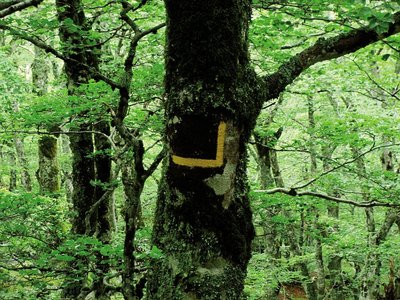
Marquage d'un ilôt de sénescence - © Mathieu Baconnet  Know-how
Know-howForestry management
This forest parcel consists of several units, which are managed differently. Some of its stand of large Corsican pines were “regeneratively” felled in 2007 to gather wood and encourage the regeneration of young trees. The parcel’s copses of oak and chestnut will be managed so as to preserve and favour tillers (young trees judged straight and vigorous enough to grow into handsome mature forest). Below you on the slope is a stand of protected ash trees, which are being left to evolve naturally.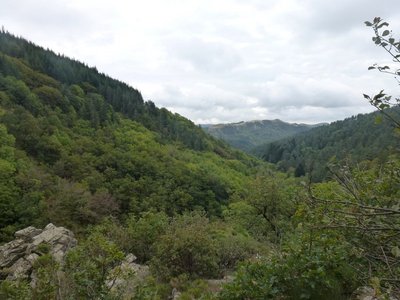
© C. Daquo  Flora
FloraTree stands
From the viewpoint over the cascades at La Fabrié, the opposite slope presents a neat demarcation between stands of leafy trees (oaks and chestnuts) lower down and, higher up, conifers that were planted in reforestation operations. Different species were chosen to take account of local environmental conditions, such as the nature and depth of the soil, water reserves, microclimates, exposure: Douglas firs on one side and Atlas cedars with their blueish branches on the other.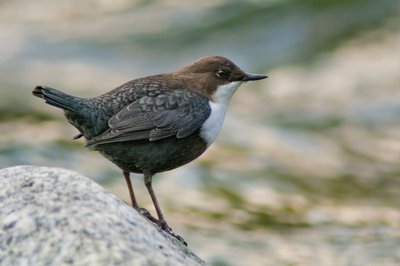
cincle plongeur - © Gaël Karczewski  Fauna
FaunaRiver fauna
This river is the kingdom of the brown trout, which reproduces (spawns) here. A ball of brown and white feathers level with the water is the emblematic bird of torrents: the white-throated dipper. It feeds on insects and larvae , which it eats submerged while moving against the current by walking on the riverbed! Its nest is a big ball of moss, which shelters two broods of 4 to 5 baby birds a year.
Forecast
Altimetric profile
Recommandations
Is in the midst of the park
The national park is an unrestricted natural area but subjected to regulations which must be known by all visitors.
Information desks
Tourism office Cévennes and Navacelles, Le Vigan
Maison de pays, place du Marché, BP 21, 30120 Le Vigan
This office is part of the National Park's associated tourist-information network, whose mission is to provide information on, and raise awareness of, the sites and events as well as the rules that must be observed in the National Park's central zone.
Open year-round
Transport
Lio 101 – Campestre and Luc – Le Vigan. Arrêt Alzon
www.lio.laregion.fr
www.lio.laregion.fr
Access and parking
From Le Vigan, D999 towards A75. In the village of Alzon, take the D231.
Parking :
Marked car park before the hamlet of Cazebonne
Calculateur d'itinéraire Lio
Utilisez le calculateur liO pour organiser votre trajet en région Occitanie.
Autres régions
Calculez votre itinéraire en Auvergne Rhône Alpes sur Oùra
Biodiversité autour de l'itinéraire
Source

Office national des Forêtshttp://www.onf.fr/

Parc national des Cévenneshttp://www.cevennes-parcnational.fr/
Report a problem or an error
If you have found an error on this page or if you have noticed any problems during your hike, please report them to us here:

